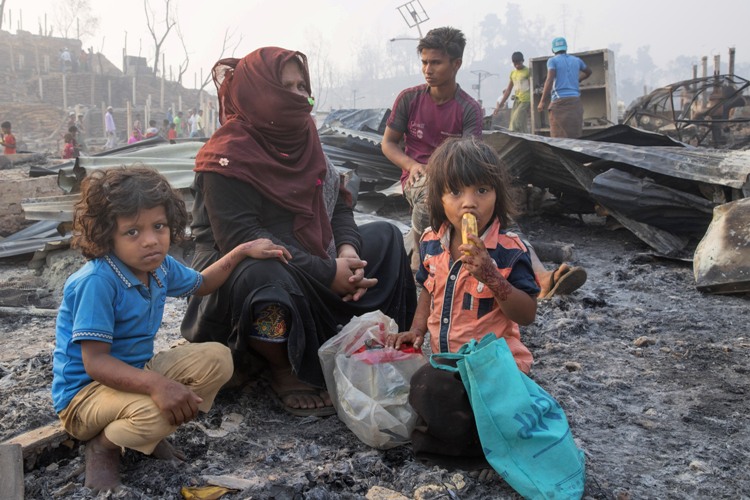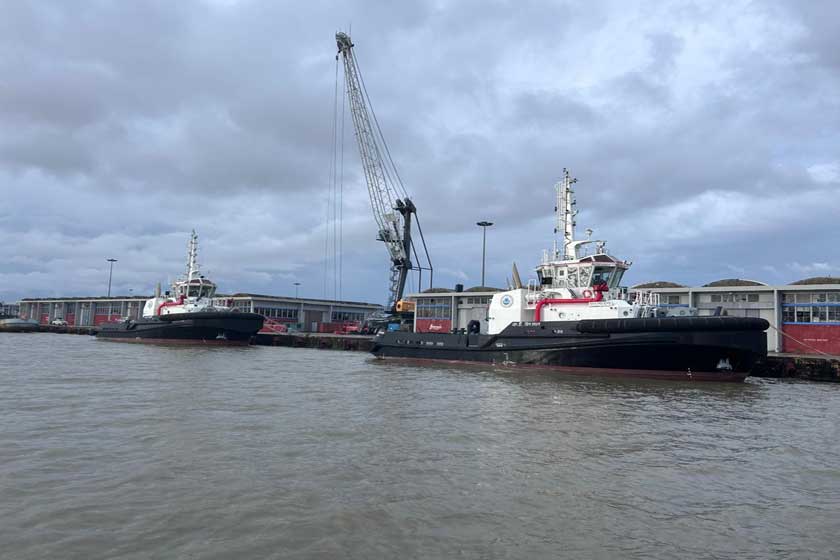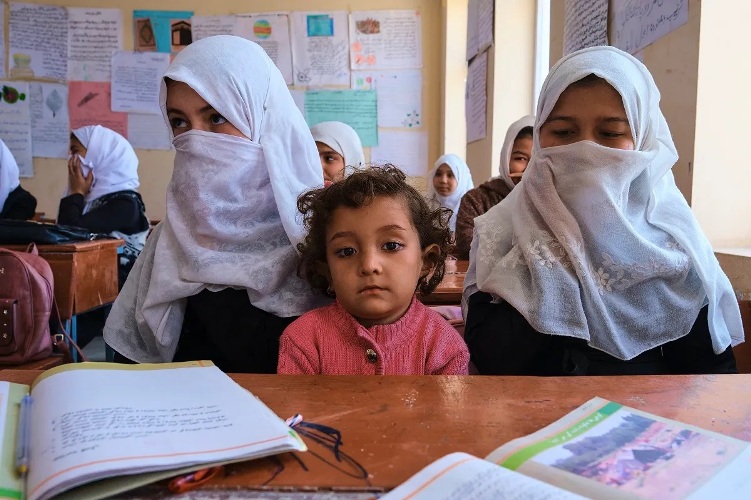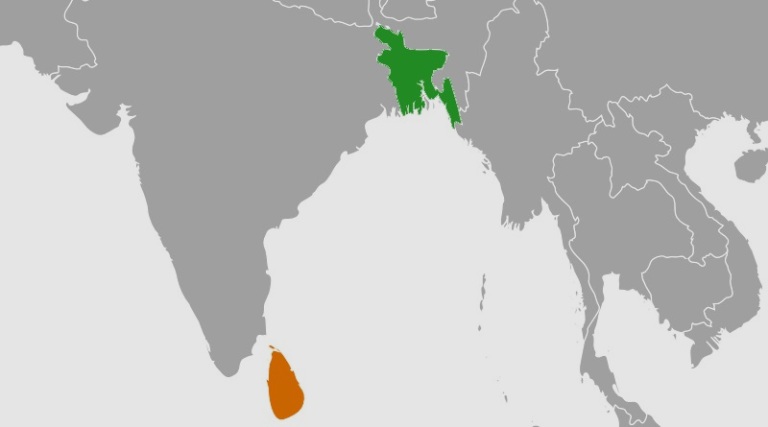
On both sides of the border, there is considerable excitement over Prime Minister Narendra Modi’s visit to Bangladesh to attend the nation’s golden jubilee independence celebrations and the birth centenary of Sheikh Mujibur Rahman. Myriad topics of bilateral cooperation are on the agenda, but the visit is first and foremost an affirmation of the fact that Bangladesh is core to India’s ‘neighbourhood policy’ and a valued partner in the ‘Act East Policy’.
But beyond exploring economic opportunities, the visit should serve as an occasion to extol Bangladesh for accommodating more than a million Rohingya refugees. As a nation with limited resources, the inflow of Rohingya has caused significant economic and strategic challenges for Bangladesh. While the country has borne episodic influxes of Rohingya fleeing violence in Myanmar, the most significant exodus was witnessed in August 2017. It is estimated that 8-9 lakh Rohingya entered Bangladesh in 2017-18, joining 3,00,000 brethren already there from previous waves of displacement. By September 2019, around 1.3 million Rohingya were estimated to be in Bangladesh. Due to these sudden arrivals, concentrated in the narrow landmass of Cox’s Bazaar, Bangladesh has been dealing with one of the world’s largest refugee emergencies with serious consequences for its economy.
News concerning a million Rohingya is habitually distressing. Their futures are uncertain and an interminable life in camps is unfair, both for the refugees and for Bangladesh, the largest host nation. Attesting to the transience of life in camps, a massive fire ripped through a Rohingya refugee camp in Bangladesh on March 22. Even as reports of at least 15 killed came in, hundreds remain unaccounted.
In another chilling incident, a boat carrying 90 Rohingya aiming to reach Malaysia was stranded for two weeks in the Andaman Sea, after its engine failed. Eight refugees died on the boat while the others were rescued by the Indian coast guard. Although the Rohingya have fled violence in Myanmar, uncertainty about the future grips those living refugee lives in Bangladesh. For Bangladesh, the massive Rohingya refugee population has proved tremendously straining for the nation’s ecology and economy.
Diplomatic facets of the Rohingya crisis
The diplomatic aspects of the crisis are complex in nature. When it comes to addressing Rohingya repatriation to Myanmar, the situation remains stagnant. Refugees refuse to go back to Myanmar out of fear for their safety. Bangladeshi border security forces have been on high alert along the border with Myanmar following the military takeover.
Saudi Arabia which had, over decades taken in tens of thousands of Rohingya, has requested Dhaka to issue the refugees Bangladeshi passports as the kingdom “doesn’t keep stateless people.” This places Bangladesh in an odd quandary, as it doesn’t recognise the Rohingya as its citizens and is in pursuit of their eventual repatriation to Myanmar.
In India, about 40,000 Rohingya live in camps and slums in many areas including Jammu, Hyderabad and New Delhi. India has denied refugee status to the Rohingya, and – on the dubious ground that they pose a threat to national security – has begun to actively deport them. Following instructions from the Centre for states to identify and initiate the deportation process, police in Jammu and Kashmir detained over 150 Rohingya and sent them to holding centres. Fearing deportation to Myanmar, Rohingya in India have begun fleeing to Bangladesh. Since January, 400 Rohingya refugees living in West Bengal have disappeared from their villages, many crossing over the border.
Environmental degradation
Most of the Rohingya in Bangladesh live in five camps. To illustrate – Kutupalong camp and its surrounding settlements accommodate about 700,000 refuges. According to one estimate, approximately 84,000 people live there per square kilometre.
Southeastern Bangladesh, adjoining the Myanmar border, where the refugees are concentrated, is an ecologically fragile region and the influx of refugees has placed it on the brink of an environmental disaster. Environmental destruction and loss of forested land has occurred at an alarming rate in the last four years. Rohingya refugee settlement has damaged reserve forests, from the erection of makeshift shelters, burning of firewood, and anthropogenic activities relating to subsistence needs of the refugees.
Rohingya have settled spontaneously in outlying areas, triggering rapid degradation of forested land. The migratory routes of the elephants were disrupted by expansion of camps along their routes, bringing on a dramatic escalation of encounters between humans and elephants in the 3,500 acres of forestland of Ukhia-Teknaf range.
Resettling the Rohingya to Char areas
To ease the overcrowded camps in Cox’s Bazar, the Bangladeshi government in right earnest decided to resettle groups of Rohingya in the riverine districts or ‘Char’ areas, specifically the island of Bhashan Char, 60 km from the mainland, in the Bay of Bengal, developing it at a cost of more than $360 million. Beginning December 2020, Bangladesh has relocated 14,000 Rohingya to Bhashan Char.
Rights groups have been critical of Bangladesh’s decision over concerns of vulnerability to severe weather and flooding. In its defence, the Bangladeshi government says that it has constructed 120 cyclone shelters, which can be used as hospitals, schools and community centres throughout the year. Last week, a UN team completed its first visit to the island.
Bangladesh’s economy spends an estimated $1.21 billion a year supporting the Rohingya. The influx of refugees has adversely affected not only the Cox’s Bazaar area but the national economy. Unemployed Rohingya have been found to be involved in criminal activities like Yaba drug smuggling. Managing law and order in the Cox’s Bazar region has become a sizeable task for the enforcement agencies in the area.
‘Can’t take any more’
Lamenting the effect on Bangladesh, foreign minister A.K. Abdul Momen recently urged other countries and human rights bodies to come forward to also take in Rohingya refugees. “Let other countries take (the Rohingya). We can’t take more,” he said.
There is certainly evidence to indicate that Bhashan Char is prone to flooding, but given that almost all refugees have emphatically refused to return to Myanmar, Dhaka has few options left. At this point, while Myanmar is in a state of emergency and Bangladesh is bursting at the seams, India should not insist on deporting the few thousands here to Myanmar. Evidence indicates the Rohingya are simply fleeing to Bangladesh.
It is hoped that during the two-day visit, Modi will acknowledge the problems that Prime Minister Sheikh Hasina’s government is facing in accommodating a million stateless people at a heavy cost to its ecology and economy. With a repatriation to Myanmar unlikely soon, Bangladesh may have to host the refugees indefinitely. It is time that the world becomes more sensitive to the monumental fiscal burden Bangladesh faces. Awarding credit to Bangladesh will bestow the occasion marking 50 years of formal bilateral relations with a special significance.
Vaishali Basu Sharma is an analyst on Strategic and Economic Affairs












0 Comments